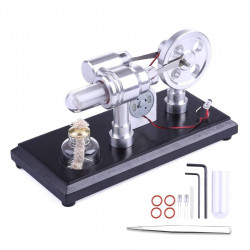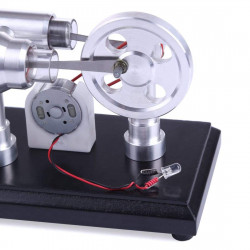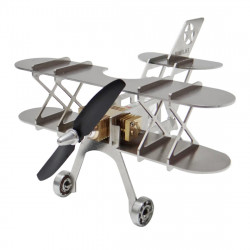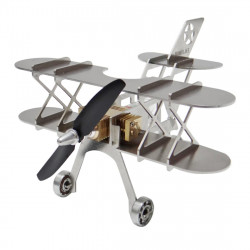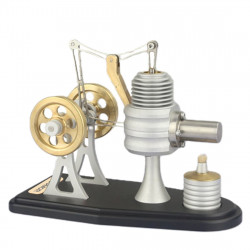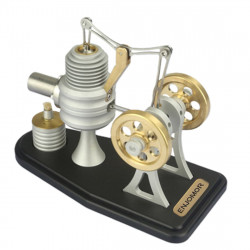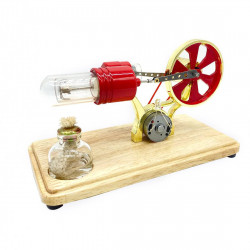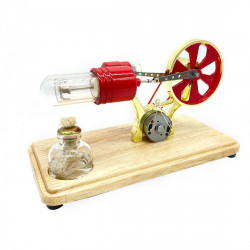
Traxxas Repair: Troubleshooting Tips for Solving the Most Common RC Car Issues
You already know how much fun remote-controlled cars can be if you're a fan. However, you are also aware of how annoying it can be when your car breaks down or performs poorly. You want to get your automobile back in driving condition as quickly as possible, regardless of the cause—a battery problem, a steering difficulty, a motor failure, or something else.
Thankfully, there's a strong possibility that someone else has previously resolved the problem if you're having trouble with your Traxxas RC car or truck. We made this guide to assist you in diagnosing and determining the most frequent issues that arise with Traxxas automobiles. These consist of:
Why won't my Traxxas car turn on?
Why won't my Traxxas car move?
Why is my Traxxas running backwards?
Why did my Traxxas servo stop working?
How do I know if my Traxxas motor is bad?
What is the reset button on Traxxas remote?
Why is the red light blinking on my Traxxas transmitter?
How do I reset my Traxxas transmitter?
How do I troubleshoot my transmitter?
How do I reset my Traxxas ESC?
How do I look for an open circuit in a busted Traxxas RC car?
How do I reconnect a Traxxas steering column?
How do I fix a Traxxas RC car that isn't rebounding?
Our advice can help you restore your car to its best performance and rediscover the excitement of RC racing. Let's begin by answering the first and likely most frequent Traxxas troubleshooting query.
Why Won't My Traxxas Car Turn On?
If a Traxxas RC car isn't starting, it might not be a mechanical or electrical problem. Checking a switch, battery, or channel can sometimes be the answer. The following items should be checked first:
Remember to turn on the transmitter and the vehicle. This may seem self-evident, but occasionally, individuals turn off the automobile or the transmitter while it is being transported or stored or forget to pull the switch.
Verify that the transmitter is on the same channel as the vehicle. If you own more than one Traxxas vehicle or transmitter, you may have unintentionally switched the channels. Switch both devices off, then switch on the transmitter first, followed by the vehicle, to synchronize them. They should be paired when the car's LED blinks once.
If you own multiple RC vehicles, be sure you are using the appropriate transmitter. Different Traxxas car models may employ different frequencies or protocols. The Traxxas XL-5 transmitter, for instance, is incompatible with the Traxxas Link app, but the Traxxas TQi transmitter is. To find out which transmitters are compatible, see the manuals for your vehicles and transmitters.
Verify that all of your batteries are charged. If your battery is low, your automobile may lose power or signal. If your car has a telemetry system, you can use the Traxxas Link app to check the voltage of your batteries, or you can use a voltmeter. The suggested voltage for the majority of Traxxas vehicles ranges from 7.4V to 14.8V for LiPo batteries and from 7.2V to 9.6V for NiMH batteries, depending on the number of cells in your battery. For additional information, see our Traxxas Battery Guide.
Verify that the batteries are positioned correctly. If they are broken, loose, or inverted, they may not supply your automobile with enough current. Please verify that the connectors and batteries are tight and secure and check their polarity. As soon as you notice any indications of corrosion, leaking, or swelling, replace the batteries.
Verify the functionality of your battery charger. If your charger is broken, your batteries may not charge entirely or at all. To check if the findings change, you can try a different charger or a different battery. Seek help from the professionals at V8engineforsale if you think your charger is broken.
Verify that the antenna is stretched all the way. Your car's range and signal quality may be impacted if the antenna is shorter, deformed, or broken. Also, verify the transmitters and the car's antennas to ensure that no metal or electronic objects are blocking them.
Suppose you still have issues with an unresponsive car after following this list of troubleshooting steps. In that case, you may have an electrical or mechanical problem that needs more sophisticated diagnostic and fixing. In the next section, we'll demonstrate how to recognize and resolve some typical Traxxas problems.
Why Won't My Traxxas Car Move?
When your Traxxas vehicle doesn't obey your commands, it can be unpleasant. You may believe that your car has a problem or that some parts need to be replaced. To check if you can resolve the issue on your own, try a few simple troubleshooting techniques before drawing any conclusions.
Verify your car's battery level. If the battery is dead or low, it won't supply enough power to run the motor. Make sure the battery is correctly attached to the speed control and replace or recharge it.
Look for any indications of damage, overheating, or loose wires on the motor and speed control. The car won't move if the speed control or motor is unplugged, burned out, or shorted. If either the motor or the speed control is broken or flawed, you might have to replace them.
Look for obstacles, damaged components, or excessive wear in the drivetrain. If any of the wheels, shafts, bearings, or gears are worn out, stripped, cracked, or jammed, your vehicle's performance and mobility may be impacted. If they are worn out or malfunctioning, the drivetrain parts may need to be cleaned, lubricated, adjusted, or replaced.
Verify that your speed control and transmitter are calibrated. If they are not appropriately calibrated, the motor will not receive the right signals. In accordance with your manual's directions, you should recalibrate the transmitter and speed control.
If none of these troubleshooting suggestions resolve the issue, you should contact Traxxas customer service for more help. They can suggest a nearby authorized service centre or assist you in identifying and fixing the problem.
Why Is My Traxxas Running Backwards?
Nothing compares to executing incredible tricks while speeding through your Traxxas vehicle. However, what would happen if your car stopped moving altogether or started going backwards? Your enjoyment may be disrupted, and you may feel furious or disappointed. Don't worry; you don't need to spend a lot of money on repairs or give up on your vehicle.
To determine whether you can get your automobile moving again, you can first attempt these easy troubleshooting steps:
Verify that the motor wires are not inverted. If so, the two motor wires that link the motor and speed control must be switched. Before proceeding, make sure to detach the battery. After that, check to verify if the car is operating in the right direction.
Verify that the throttle and steering channels on the transmitter are inverted. You must modify the steering and throttle channel settings in the transmitter's programming menu in order to resolve this. For further instructions on how to accomplish this, consult your owner's handbook. After that, check to verify if the car is operating in the right direction.
Why Did My Traxxas Servo Stop Working?
Your Traxxas servo may have ceased functioning for a number of reasons. The following standard troubleshooting advice will assist you in locating and resolving the issue:
Look for any loose connections or damage to the servo cables. If the wires are damaged, frayed, or shorted, the servo may malfunction or burn out. To check for breakage or a short circuit, you can use a multimeter to verify the wires' continuity. If the cables are damaged, it could be necessary to either connect fresh wires to the servo board or replace the servo.
Look for any wear or damage on the servo saver. A spring-loaded tool called a servo saver shields the servo from shock or undue strain. The servo may overwork or fail if the servo saver is worn out, damaged, or absent. A replacement servo saver that fits your servo model and vehicle type can be used in its place.
Look for any cracks or missing teeth on the servo horn. The metal or plastic arm that joins the servo to the steering linkage is called the servo horn. The servo may lose control or cease to function if the servo horn is fractured or stripped. You can swap out the servo horn with a new one that matches the type of vehicle and servo spline you have.
Examine the servo gears for wear or damage. The internal parts that move power from the motor to the servo horn are called servo gears. If the servo gears are worn out or damaged, the servo may generate noise, lose torque, or stop operating. You can check the gears for wear or damage by opening the servo casing. If the gears are damaged, you should buy a gear set that fits your servo model or replace the servo.
Verify the servo's current and voltage rating. If it's voltage or current rating is too low for your battery or speed control, the servo may overheat, draw excessive current, or stop functioning. You can verify the servo's voltage and current rating on the servo label or the manufacturer's website. If it is too low, you should swap out the servo for one with a better voltage or current rating.
If your RC servo is technically operating but exhibiting one of the following symptoms, please refer to our RC servo troubleshooting guide for additional advice.
The servo is becoming too hot.
There is a twitching servo.
There is a chattering servo.
A high-pitched sound is coming from the servo.
How Do I Know If My Traxxas Motor Is Bad?
You should troubleshoot your Traxxas motor to determine the source of the issue if it is making strange noises or not operating as it should. The following standard advice may help you identify and resolve your RC motor problems:
Examine the connectors and wires. Verify that there are no frayed, loose, or damaged wires connecting the motor to the speed control. Additionally, make sure the connectors are securely plugged in and clean. If you notice any indications of corrosion, dirt, or overheating, the connectors may need to be replaced or cleaned using a contact cleaner.
Verify the motor's temperature. After a few minutes of operation, check the motor's temperature. If it is too hot to touch, the motor is overheating and may be worn out or destroyed. A number of things, including an excessive load, low battery voltage, incorrect gearing, or inadequate airflow, can lead to overheating. To avoid overheating, lower the load, switch to a higher-voltage battery, alter the gear ratio, or equip the motor with a cooling fan or heatsink.
Examine the motor's bearings. The motor shaft may spin smoothly and silently thanks to the motor bearings, which are found at both ends. Friction, noise, and decreased performance may result from worn-out, unclean, or damaged bearings. Take the motor off of the car and manually rotate the shaft to inspect the motor bearings. The bearings need to be cleaned or changed if you experience any resistance, grinding, or wobbling. A bearing cleaner spray can be used to clean the current bearings, or a bearing puller tool can be used to remove the old ones and install new ones.
Look for gears that have been stripped. You will need to buy new gears if your motor seems to have stripped gears. Sometimes, the gears can be realigned to fix the issue if they aren't stripped.
Examine the commutator and motor brushes. Please skip this step if you have a brushless model. The commutator, a metal cylinder with segments that revolve with the motor shaft, receives electricity from the carbon blocks that make up the motor brushes. Over time, wear and tear on the brushes and commutator may impair the motor's efficiency and performance. Removing the motor end cap allows you to examine the brushes and commutator for wear, damage, or filth. You should buy new brushes if the old ones are cracked, worn down, or uneven. You might need to use a commutator lathe or fine-grit sandpaper to resurface the commutator if it is pitted, grooved, or discoloured. To ensure that the brushes and commutator segments are correctly aligned, you can also utilize a brush hood alignment tool.
If you've decided your current motor is broken, we have a wide array of replacement RC motors that are compatible with any Traxxas model you may be using.
What Is The Reset Button On A Traxxas Remote?
A tiny red button on the transmitter's back, close to the battery compartment, is the reset button on most Traxxas remote controls. If you need to troubleshoot or recalibrate your remote, you can press the reset button to return the transmitter settings to their factory values.
Use these procedures to reset your Traxxas remote:
Switch off both your receiver and transmitter.
To get the LED indicator to flash red, press and hold the reset button for approximately three seconds.
Once the reset button has been released, activate your transmitter. Green should glow on the LED indicator.
Wait for the transmitter and receiver to bind after turning on your receiver. The LED indicator ought to go completely green.
The factory settings for your Traxxas remote have now been restored.
Why Is The Red Light Blinking On My Traxxas Transmitter?
For any of the following reasons, your Traxxas transmitter's red light may blink:
The batteries in the transmitter are low. Use rechargeable NiMH batteries or new alkaline cells in their place.
The transmitter is in low-voltage mode. To exit this mode, hold down the menu button for three seconds.
The receiver and transmitter are not connected. Once the car and transmitter are off, turn the transmitter back on and push and hold the link button until the green LED blinks. Wait for the transmitter and receiver to bind after turning on the car. Solid green should be displayed on the LED indication.
The transmitter is in programming mode. To exit this mode, press and release the menu button.
The transmitter has a fail-safe mode. This indicates that the receiver is using the default brake and throttle settings since it has lost signal with the transmitter. To get out of this mode, switch off the car and then switch on the transmitter. The LED indicator ought to go completely green.
If the issue continues, check Traxxas' website or contact customer service for additional troubleshooting advice.
How Do I Reset My Traxxas Transmitter?
Use these procedures to reset your Traxxas transmitter:
Disconnect the battery and turn off the car.
Hold down the transmitter's Menu button for three seconds until the red LED flashes. This will activate the programming mode.
To go through the options until you find the Reset option, press the Set button. The LED will cycle between flashing red and green.
To make the LED solid green, press and hold the Set button for three seconds. This will end the programming mode and validate the reset.
Turn the car on after reconnecting the battery.
This should restore the transmitter to its original configuration.
How Do I Troubleshoot My Transmitter?
If you are experiencing problems with your Traxxas transmitter not turning on, you can fix it with these simple steps:
To see your transmitter's circuit board, open the cover.
Your transmitter should have contacting contact points at the copper plates because it is a closed-circuit system. If you see that your copper plates aren't touching, you can get away with a simple solution like bending the metal contacts.
Sometimes, in order to get those contacts to touch, you have to cut off screws so that your circuit board can screw in closer and seal the spaces between your copper and metal plates.
If the problem persists, you might have to buy a new transmitter.
How Do I Reset My Traxxas ESC?
Use these procedures to reset the electronic speed control (ESC) on your Traxxas:
Switch the throttle trim to the neutral position and turn on your transmitter.
Turn on the ESC by connecting a fully charged battery pack to it.
A sequence of tones signalling the detection of the neutral point should be heard from the ESC.
Holding down the EZ-Set button causes the ESC to beep for a lengthy time before flashing a green LED. This signifies that the ESC has entered programming mode.
After releasing the EZ-Set button, watch for two beeps and two green LED flashes from the ESC. This shows that the low voltage setting is ready to be accepted by the ESC.
Holding down the EZ-Set button causes the ESC to beep for a long time before flashing two red LEDs. This shows that the ESC is prepared to accept the high-voltage setting after receiving the low-voltage preset.
Wait for the ESC to make three beeps and then three green LED flashes after releasing the EZ-Set button. This shows that the high-voltage setting is acceptable to the ESC.
Holding down the EZ-Set button will cause the ESC to beep for a long time before flashing three red LEDs. This shows that the ESC is prepared to accept the reverse mode setting after receiving the high voltage setting.
After releasing the EZ-Set button, wait for the ESC to make four beeps and then four green LED flashes. This shows that the ESC is prepared to accept the setting for reverse mode.
Holding down the EZ-Set button causes the ESC to beep for a long time before flashing four red LEDs. This shows that the ESC is prepared to leave the programming mode after accepting the reverse mode configuration.
Please wait for the ESC to produce a sequence of tones signifying that it has been reset and is prepared to function after releasing the EZ-Set button.
Your Traxxas ESC has been successfully reset. For additional details, please visit the Traxxas website or consult your user manual.
How Do I Look For An Open Circuit In A Busted Traxxas RC Car?
Your RC car may stop working or behave strangely due to an open circuit, which is a gap in the electrical channel that prevents current from passing through its parts. Numerous things, including physical damage, corrosion, moisture, filth, and overheating, might result in an open circuit.
To prevent open circuits, you should always handle your remote-controlled car carefully, keep it dry and clean, and keep it out of extremes of humidity and temperature. Additionally, you should perform routine maintenance and check your circuit board and wires for wear and tear.
You must check your circuit board and cables for any gaps, breaks, or loose connections in order to locate and repair an open circuit. To solve your RC car wiring problems, follow these steps:
Disconnect the ESC's battery and turn off your transmitter and receiver. After the body shell is removed, the circuit board is visible.
To check the circuit's continuity, use a multimeter. Touch the probes to the battery connector's positive and negative terminals after setting the multimeter to resistance mode. The circuit is closed and there isn't an open circuit if the multimeter displays a low resistance value that is near zero. The circuit is open and there is a break someplace if the multimeter shows a high resistance value (infinity or OL).
Follow the cables to the ESC, motor, and servo from the battery connector. Check for burns, frays, nicks, and other indications of damage. Additionally, look for any loose or damaged connections in the solder joints and connectors. Repairing any damaged wires requires removing them and joining the ends with solder. You must replace or re-solder any solder joints or connectors that you discover to be defective.
Touch the multimeter probes to the appropriate wires or terminals to check the continuity of each component independently. To test the ESC, for instance, contact the probes to the black and red wires that connect it to the battery. Touch the probes to the blue and yellow cables that link the motor and ESC to test the motor. Touch the probes to the black and red wires that join the servo and receiver to test the servo. Any component that exhibits a high resistance value is faulty and requires replacement.
Turn on your transmitter and receiver and reconnect the ESC's battery. Check to determine if your RC car is operating appropriately. If not, keep going through the previous steps until you locate and repair the open circuit.
How Do I Reconnect a Traxxas Steering Column?
Superglue is frequently a quick remedy if your steering arm is separated from the servo. In certain situations, the two parts can be reconnected by joining wires. Although a steering column repair can typically be completed superficially, if you want easier access, think about opening up your Traxxas RC vehicle.
How Do I Fix A Traxxas RC Car That Isn't Rebounding?
The most likely cause of your RC vehicle's inability to rebound is a mechanical problem resulting from damaged shocks. A basic cleaning or a complete replacement may be required.
The following are the main shock problems to check for when diagnosing your Traxxas RC vehicle:
An oil leak from a damaged shock cap.
Unclean shocks (shocks don't need to be disassembled to be cleaned with soap and water).
Air bubbles brought on by an unfinished oil change.
Between your control arms are rocks and trash.
If diagnostics reveal all of these problems, consider changing the shocks on your Traxxas RC car. Remember to include shock oil in your regular Traxxas maintenance.
Find The Best Parts For Traxxas Repair At V8engineforsale
Using dependable components from V8engineforsale is the best way to keep your Traxxas in top condition. In fact, if your Traxxas RC car isn't performing up to par, upgrading a few parts can be worthwhile.
